Contents
Description
The market is filled with products like toothpaste, chewing gum, breath freshener, candy, and inhalers in which mint is the base ingredient. Most of us have an idea of this herb as a refreshing plant, but it can give much more to the human body.
Mint is a perennial plant that has been used for hundreds of years and is known for its medicinal properties.
It emerged as a result of hybridization, an artificially bred species. It practically does not form viable seeds, therefore it does not occur in the wild. Rare representatives of the species can accidentally grow from the left rhizomes.
Cultivated in industrial volumes, planted on personal plots. For cultivation, pieces of rhizomes, seedlings or small shoots are used.
Flowering begins in July and lasts until the end of summer. Peppermint prefers moist, fertile soil.
Mint composition
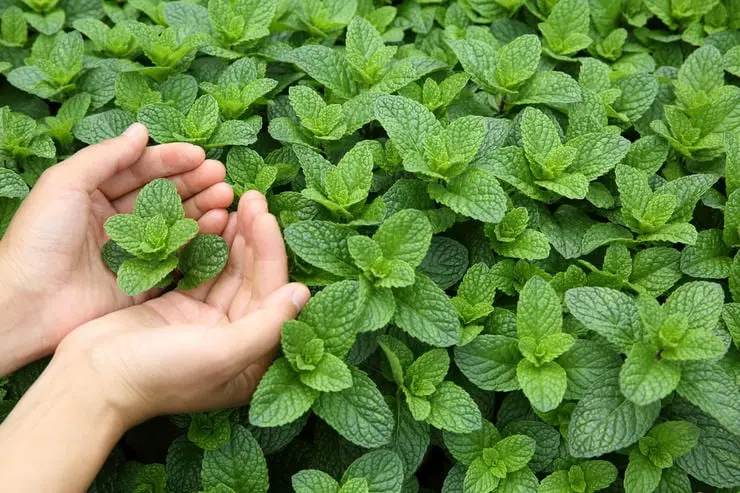
Peppermint leaves contain essential oil (2-3%), which includes menthol, pinenes, limonene, felandren, cineole and other terpenoids, in addition, they contain flavonoids, ursolic and oleanol acids, betaine, carotene, hesperidin, tannins, acids organic, trace elements
- vitamins A and C
- potassium, calcium and manganese
- alimentary fiber
- flavonoids
- folic acid
- calorie content – 60 kcal / 100 g
Benefits of mint
Mint for digestion.
Mint promotes proper digestion, soothes the stomach in case of disturbed or inflammation. Plus, if you like to travel by plane or boat, peppermint oil, mint, will help with nausea and will serve as a remedy for motion sickness.
The mint aroma activates the salivary glands in the mouth, as well as the glands that secrete digestive enzymes, thereby helping to facilitate digestion.
When you feel pain in your stomach, drink a cup of mint tea and you will immediately find relief.
Peppermint while nausea and headaches.
The strong and refreshing scent of mint is a quick and effective remedy for nausea. Peppermint grass is an essential natural soothing agent that can help with inflammation and fever, which is often associated with headaches and migraines.
The mint leaves should be rubbed on the forehead and nose for quick relief from headaches and nausea.
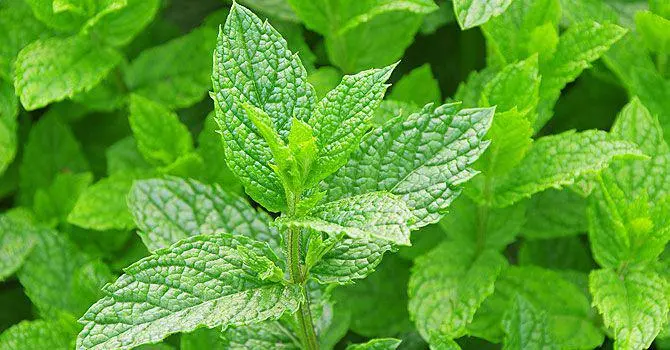
Peppermint while coughing.
The scent of peppermint is an excellent remedy in clearing up congestion in the nose, throat, bronchi and lungs, which provides relief for respiratory distress that often lead to asthma and colds. Peppermint cools and soothes the throat, nose and other respiratory passages and relieves irritation that causes chronic coughs. This is the main reason why there are so many mint-based balms and syrups.
Peppermint for asthma.
Regular use of peppermint is very beneficial for asthma patients, as it is a good relaxant and can also relieve respiratory congestion. But too much peppermint can irritate the nose and throat.
Mint when breastfeeding.
For many women, breastfeeding is an integral part of parenting, but it can seriously damage your breasts and nipples. Research has shown that peppermint oil can reduce cracked nipples and pain that so often accompany breastfeeding.
Peppermint for depression and fatigue.
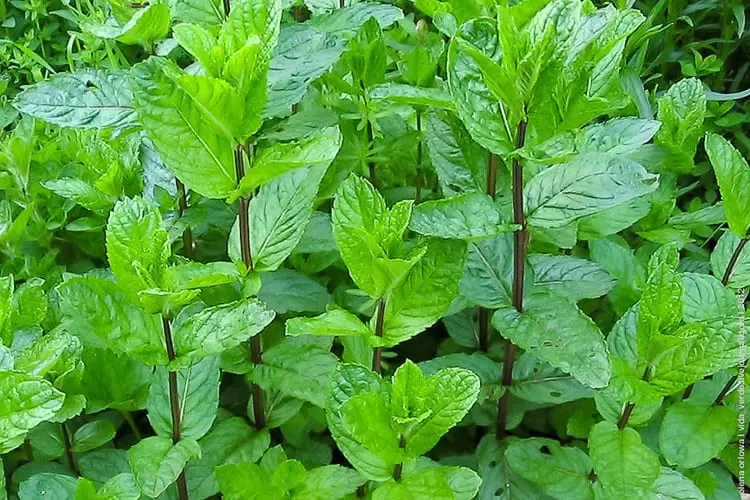
Peppermint essential oil – menthol, whose aroma is a natural brain stimulant. If you are feeling lethargic, tired and worried about depression, then mint tea can help you relax.
Popular relaxation technique: Put a few drops of peppermint essential oil or menthol oil on your pillow at night and let it work for your body and mind while you sleep.
Peppermint for skin care and acne.
While peppermint oil is a good antiseptic, peppermint herb juice is an excellent skin cleanser. Fresh mint juice soothes the skin and helps heal infections and itching, and is a great and easy way to reduce acne. Its anti-itching properties will help treat insect bites and remove puffiness.
Mint drink is recommended for use in case of hormonal disorders of the skin (for example, acne), as it has the ability to stop the increase in estrogen levels.
Mint decoctions can be added to the bathroom to relieve rashes and skin inflammation.
For weight loss.
Peppermint is an excellent food fermentation stimulant that absorbs digestive enzymes from food and turns them into usable energy. Thus, the metabolic process in the body is accelerated and, accordingly, further weight loss.
For oral cavity care.
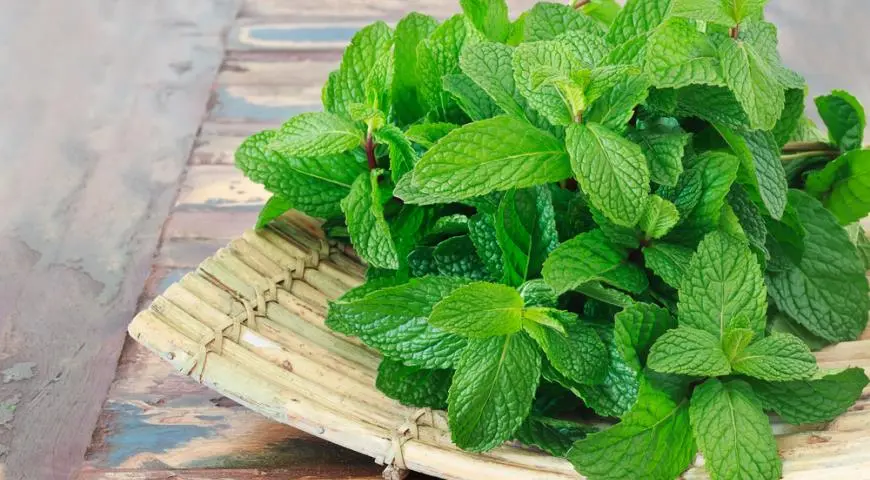
Improving oral health is a well-known benefit of peppermint. Since it is bactericidal and freshens breath quickly, it inhibits the growth of harmful bacteria in the mouth, teeth and tongue. This is why mint is used to rub directly onto the teeth and gums, cleanse the mouth and eliminate dangerous forms of inflammation.
Mint for menopause.
Mint tea relieves the unpleasant symptoms of menopause and painful menstrual periods. It is recommended to drink tea from two tablespoons of dry mint leaves per 1 liter of boiling water.
Procurement of raw materials
Peppermint is harvested during active flowering. The whole plant is cut. Collection time is before noon. A shaded area is required for drying, a covered area is not necessary. The mint is laid out, periodically turned over. Peppermint leaves are mainly harvested. It is better to separate them from the stem when dried. The preferred storage location is a cool dry place. Properties are stored for 2 years.
Pharmachologic effect
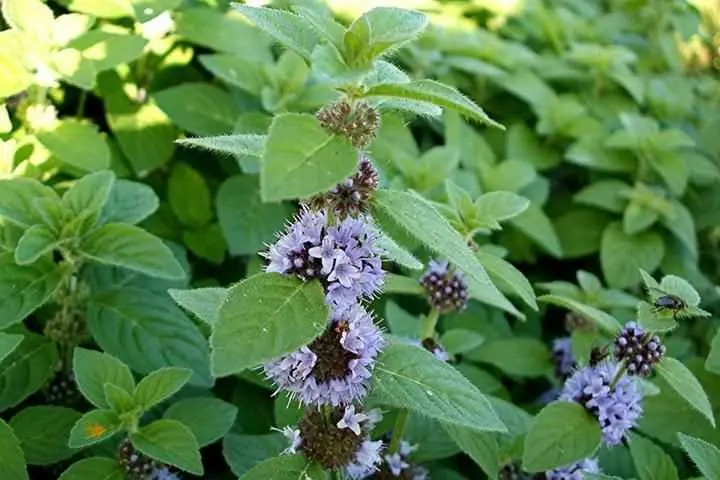
They increase the secretion of the digestive glands, stimulate appetite, suppress the processes of putrefaction and fermentation in the alimentary canal, reduce the tone of the smooth muscles of the intestine, bile and urinary tract, increase the secretion of bile, have a sedative and mild hypotensive effect.
SELF-TREATMENT MAY BE HAZARDOUS TO YOUR HEALTH. BEFORE USING ANY HERBS – GET CONSULTATION FROM A DOCTOR!









